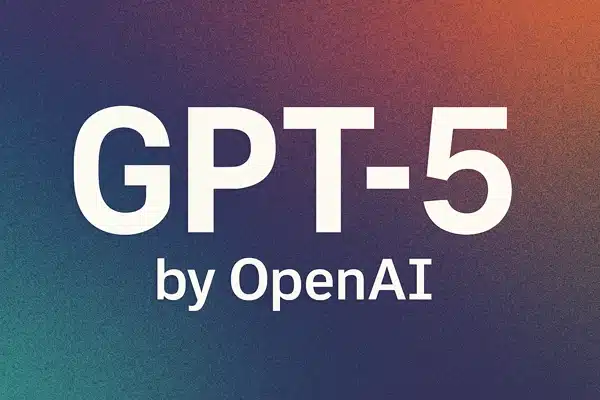OpenAI has released ChatGPT-5, the newest version of its large language model, and it is already changing the ChatGPT experience for millions of users. This is the first major generational leap since GPT-4 launched over two years ago.
The company says ChatGPT-5 is faster, more accurate, and more capable across a range of tasks. The upgrade is rolling out to both free and paid users, with some differences in limits and features based on your plan.
Sam Altman, OpenAI’s CEO, described ChatGPT-5 as a major improvement over its predecessor, saying that returning to GPT-4 now feels slow and limiting. He also noted that the improvements are both obvious and subtle, affecting nearly every interaction.
A unified model with different access levels
GPT-5 is available to all ChatGPT users, but the way you access it depends on your account type.
- Free tier: Access to GPT-5 until you hit a usage cap, after which you’ll switch to a smaller GPT-5-mini model.
- Plus tier: Similar to free users but with higher caps, giving you more GPT-5 responses before the switch to GPT-5-mini.
- Pro tier: Unlimited GPT-5 access and an additional GPT-5 Pro model designed for more demanding tasks.
- Enterprise, education, and team accounts: GPT-5 becomes the default model, though full rollout for some organizations could take a week.
Internally, GPT-5 is not a single monolithic system. It includes a fast general-purpose language model and a more advanced reasoning model for complex or nuanced prompts. A routing system determines which one is best suited for each request.
This means that if you ask a simple question, the faster model responds instantly, while complex problems are handled by the more capable reasoning engine.
Speed and adaptability in coding
One of the headline improvements in GPT-5 is its coding ability. The model writes code faster and with fewer errors. This is important not only for programmers but for anyone who needs a quick, working solution to a problem.
Yann Dubois, a post-training lead at OpenAI, demonstrated this during the launch. He asked GPT-5 to create a French-learning web application. In minutes, the model produced a functional app with audio features and interactive elements. He then ran the same prompt again and received a different working app, showing GPT-5’s ability to generate alternative approaches.
The fast turnaround encourages experimentation. You can request changes, test the result, and refine it until you get exactly what you need. This “rapid iteration” workflow makes it easier to develop tools, prototypes, and educational content without long waits between versions.
For non-programmers, this means you can describe a tool or app you want, and GPT-5 will build it for you. For developers, it’s an opportunity to offload repetitive coding tasks and focus on higher-level design.
Improved safety and accuracy
Safety has been a recurring focus for OpenAI, and GPT-5 continues this trend with refinements in how it handles sensitive or potentially harmful prompts.
Alex Beutel, the company’s safety research lead, explained that GPT-5 has been trained to reduce misleading or false outputs. It is also designed to respond more thoughtfully to prompts that sound dangerous but might have a legitimate purpose.
For example, previous models might have refused to answer a question about certain chemical reactions outright. GPT-5 tries a different approach. If a student is asking for a chemistry explanation, it will give a safe, educational response without providing unsafe instructions that could be misused.
This more nuanced behavior helps legitimate users while still maintaining guardrails against harmful activity.
Voice interaction and personalization
Another major upgrade is in voice interaction. Advanced Voice mode, which was previously limited, is now available to all users with higher usage allowances. This makes it easier to have hands-free conversations with ChatGPT, useful for brainstorming, tutoring, or accessibility needs.
Personalization options are also expanding. Users can now:
- Change chat colors, with premium color themes available to paid users.
- Adjust the model’s personality, choosing from predefined styles such as Cynic, Robot, Listener, or Nerd.
- Switch personalities at any time to match the task or mood.
This gives you more control over how ChatGPT communicates, making interactions feel more tailored to your needs.
Integration with Google services
ChatGPT-5 adds optional connectors for Google Calendar and Gmail. Once enabled, ChatGPT can check your schedule, read relevant emails, and provide suggestions without you having to paste or retype information.
For example, you could ask, “Do I have time for a meeting on Friday afternoon?” and GPT-5 will check your calendar and give an informed answer. Or you could ask it to summarize an important email chain.
This feature will launch first for Pro users, then expand to other tiers. Users who prefer to keep their accounts separate can choose not to enable the integration.
The AGI debate
During the announcement, Altman described ChatGPT-5 as a significant step toward artificial general intelligence, or AGI, which refers to AI systems that match human-level capabilities across a wide range of tasks.
He also emphasized that GPT-5 is not AGI. A key reason is that the model does not learn continuously from its interactions once deployed. It remains a static system until retrained.
The competition in AI research is intense. Meta CEO Mark Zuckerberg has been recruiting top researchers to work on “superintelligence.” AI experts are divided on whether scaling large language models like GPT-5 will eventually lead to AGI. A recent survey found that three-quarters of AI researchers are skeptical that LLMs alone will achieve that level of intelligence.
Practical takeaways for users
If you use ChatGPT regularly, GPT-5 brings clear benefits. Here are ways to get the most out of it:
- Test coding capabilities: Whether or not you’re a developer, try asking GPT-5 to build a small app or script. See how quickly you can refine it to your liking.
- Use personality settings strategically: A supportive style might work better for brainstorming, while a robotic style might be more efficient for technical queries.
- Experiment with voice mode: This is especially helpful for multitasking or long-form discussions.
- Try safe complex queries: See how GPT-5 handles nuanced topics without shutting down the conversation.
- Consider Google integration: If you value automation and time management, linking your calendar and email could save time.
Why ChatGPT-5 matters
The release of GPT-5 shows how quickly AI tools are becoming faster, more flexible, and more integrated into daily tasks. For free users, it’s a chance to try a top-tier AI system without paying. For professionals, it offers stronger capabilities and more customization.
While GPT-5 is not the final step toward AGI, it is a meaningful leap in usability and scope. The speed, coding ability, and safety improvements mean you can accomplish more in less time while having more control over how the AI interacts with you.
The next question is how users will adapt to these expanded features. As more people experiment with ChatGPT-5’s capabilities, its role in personal productivity, education, and development will continue to grow.





